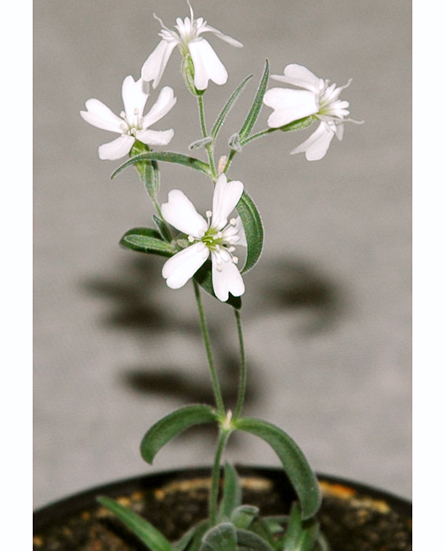A flower that last bloomed while mammoths walked the Earth has been reborn, regenerated from a piece of fruit frozen in Siberian permafrost.

It’s the oldest flowering plant ever grown from preserved tissue, Russian scientists report online February 21 in Proceedings of the National Academy of Sciences. David Gilichinsky, who led the team at the Russian Academy of Sciences’ research institute in Pushchino, died just before the paper was released.
The fruit, radiocarbon-dated to about 31,800 years ago, came from a cache of provisions stuffed into a burrow by a squirrel. Windblown silt plugged the entrance to this storage chamber 38 meters underground. The burrow froze and remained frozen — keeping its contents dry — until the scientists excavated it. Tissue scraped from the fruit and bathed in nutrients grew into fertile plants with healthy seeds that sprouted in soil.
“It is remarkable that under deep freeze, fruit tissues … can remain viable for such a long time,” says UCLA biologist Jane Shen-Miller. “This is like regenerating a dinosaur from tissues of an ancient egg.”
At first the reconstituted plants, identified as the extant species Silene stenophylla, looked exactly like their modern relatives. But when flowers appeared, the white petals of the reborn plants were narrower and less separated than those of today’s representatives of the species.
Botanist Bengt Oxelman of the University of Göteborg in Sweden, an expert on Silene plants, says the regenerated specimens may actually belong to different, though closely related, species.
In any case, the hardiness of an ancient plant’s frozen tissue is good news for Norway’s Svalbard Global Seed Vault and other projects storing seeds on ice to safeguard against the extinction of modern plants. “No one knows how long [frozen seeds] are viable for, but freezing is basically the format for all seed conservation attempts nowadays,” says Sarah Sallon, director of the Louis L. Borick Natural Medicine Research Center at the Hadassah Medical Organization in Jerusalem. Several years ago she helped grow a date palm from a 2,000-year-old seed unearthed in Israel.






